Input interpretation

methyl (-{2}-h)formate
Chemical names and formulas
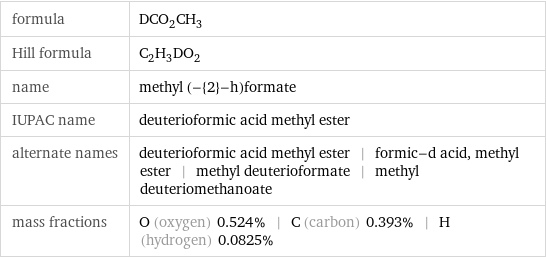
formula | DCO_2CH_3 Hill formula | C_2H_3DO_2 name | methyl (-{2}-h)formate IUPAC name | deuterioformic acid methyl ester alternate names | deuterioformic acid methyl ester | formic-d acid, methyl ester | methyl deuterioformate | methyl deuteriomethanoate mass fractions | O (oxygen) 0.524% | C (carbon) 0.393% | H (hydrogen) 0.0825%
Lewis structure
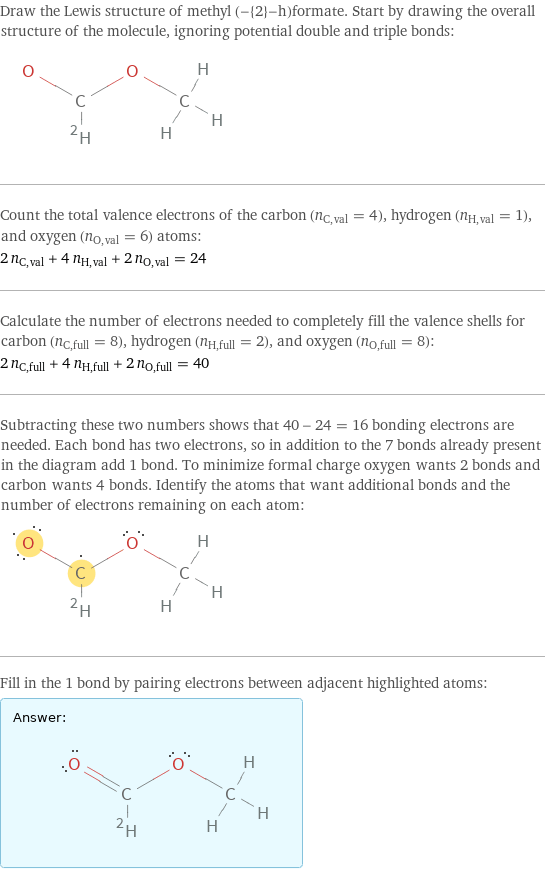
Draw the Lewis structure of methyl (-{2}-h)formate. Start by drawing the overall structure of the molecule, ignoring potential double and triple bonds: Count the total valence electrons of the carbon (n_C, val = 4), hydrogen (n_H, val = 1), and oxygen (n_O, val = 6) atoms: 2 n_C, val + 4 n_H, val + 2 n_O, val = 24 Calculate the number of electrons needed to completely fill the valence shells for carbon (n_C, full = 8), hydrogen (n_H, full = 2), and oxygen (n_O, full = 8): 2 n_C, full + 4 n_H, full + 2 n_O, full = 40 Subtracting these two numbers shows that 40 - 24 = 16 bonding electrons are needed. Each bond has two electrons, so in addition to the 7 bonds already present in the diagram add 1 bond. To minimize formal charge oxygen wants 2 bonds and carbon wants 4 bonds. Identify the atoms that want additional bonds and the number of electrons remaining on each atom: Fill in the 1 bond by pairing electrons between adjacent highlighted atoms: Answer: | |
3D structure
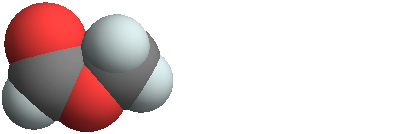
3D structure
Basic properties
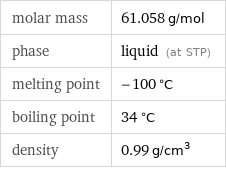
molar mass | 61.058 g/mol phase | liquid (at STP) melting point | -100 °C boiling point | 34 °C density | 0.99 g/cm^3
Units

Liquid properties (at STP)
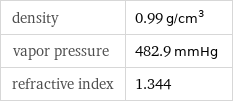
density | 0.99 g/cm^3 vapor pressure | 482.9 mmHg refractive index | 1.344
Units

Non-standard atom properties

H-2 | 1
Chemical identifiers
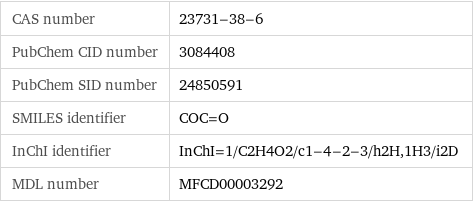
CAS number | 23731-38-6 PubChem CID number | 3084408 PubChem SID number | 24850591 SMILES identifier | COC=O InChI identifier | InChI=1/C2H4O2/c1-4-2-3/h2H, 1H3/i2D MDL number | MFCD00003292
NFPA label

NFPA label
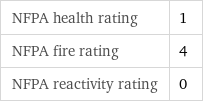
NFPA health rating | 1 NFPA fire rating | 4 NFPA reactivity rating | 0
Safety properties

flash point | -32.22 °C

DOT hazard class | 3 DOT numbers | 1243